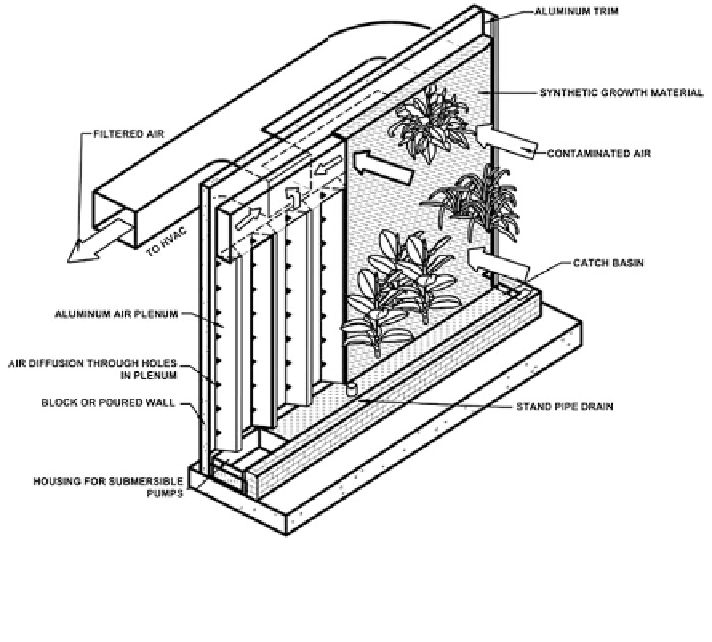Environmental Engineering Reference
In-Depth Information
Fig. 8.6 Schematic of an indoor air biofilter that utilizes plants (From Soreanu et al.
2013
). The
biofilter consists of a vertical green wall on a porous support, which is irrigated by circulation
from the catch basin. Indoor air is circulated through the green wall, where all air cleaning
processes occur
As stated previously, VOCs are present in indoor air at extremely low con-
centrations: far lower than would appear to be necessary to sustain microorganisms
if they were the sole carbon sources (Guieyesse et al.
2008
). Effective microbial air
cleaning systems may thus rely on microorganisms co-metabolising VOCs
amongst other sources of energy, i.e. the microbial communities need to be sus-
tained independently of the supply of VOCs if they are not to become carbon
source limited. Fortunately, the bacteria that degrade most indoors VOCs of
concern appear to be ubiquitous, at least in soils (Torpy et al.
2013a
), and so do not
need to be specifically isolated and cultured, as has been proposed as a limiting
factor for the use of microbial air cleaners (Guieyesse et al.
2008
). Certainly, most
research suggests that there is little evidence that natural substrata, such as soils,
lack microorganisms capable of degrading common VOCs. A hydroponic plant
growth system, with axenic plant stock and no specific microbial inoculation other
than that gained from the air and tap water at the time of transfer to the hydro-
culture pots, was found to be capable of bioremediating gaseous benzene, albeit at
a slightly reduced rate than that achieved by potting mix (Irga et al.
2013
), pro-
viding evidence that ubiquitous air- and waterborne bacterial species have VOC
biodegradation capacity. An earlier study by Chen et al. (
2005
) did not detect

Search WWH ::

Custom Search